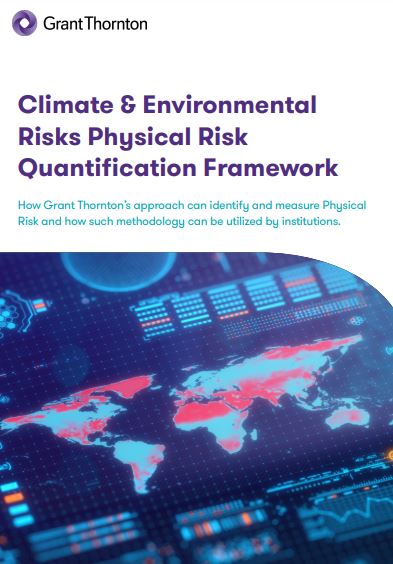Sign up for expert insights, industry trends, and key updates—delivered straight to you.

Grant Thornton (GT) has constructed a Physical Risk Quantification Framework in its effort to support financial institutions in identifying and measuring their Climate & Environmental (C&E) Risks.
In this publication, we present our methodology, implementation, and key benefits of the framework. We describe how the GT solution can support institutions,
in better understanding their Acute Physical C&E risk profile, addressing key challenges, and meeting regulatory expectations.
Following our previous publications (e.g., the NGFS Series1), and our extensive research, we have applied those principles in an attempt to capture physical risks based on geolocation, under different climate scenarios. According to TCFD2, scenario analysis is an important and useful tool for understanding the strategic implications of Climate-related risks.
This is since the most significant effects of climate change are likely to emerge over the medium to long term and hence timing and severity are uncertain. Consequently, scenario analysis constitutes an important part of our framework, enabling identification of potential shifts in risk profiles, adoption of strategic responses and informed decision-making, which are vital for the management body of every institution.
For the purposes of this publication, we present the framework under the case of Wildfires, however Grant Thornton’s approach is built on a generic framework which can be applied to any physical risk that an institution considers material (e.g., Floods, Droughts, etc.).







